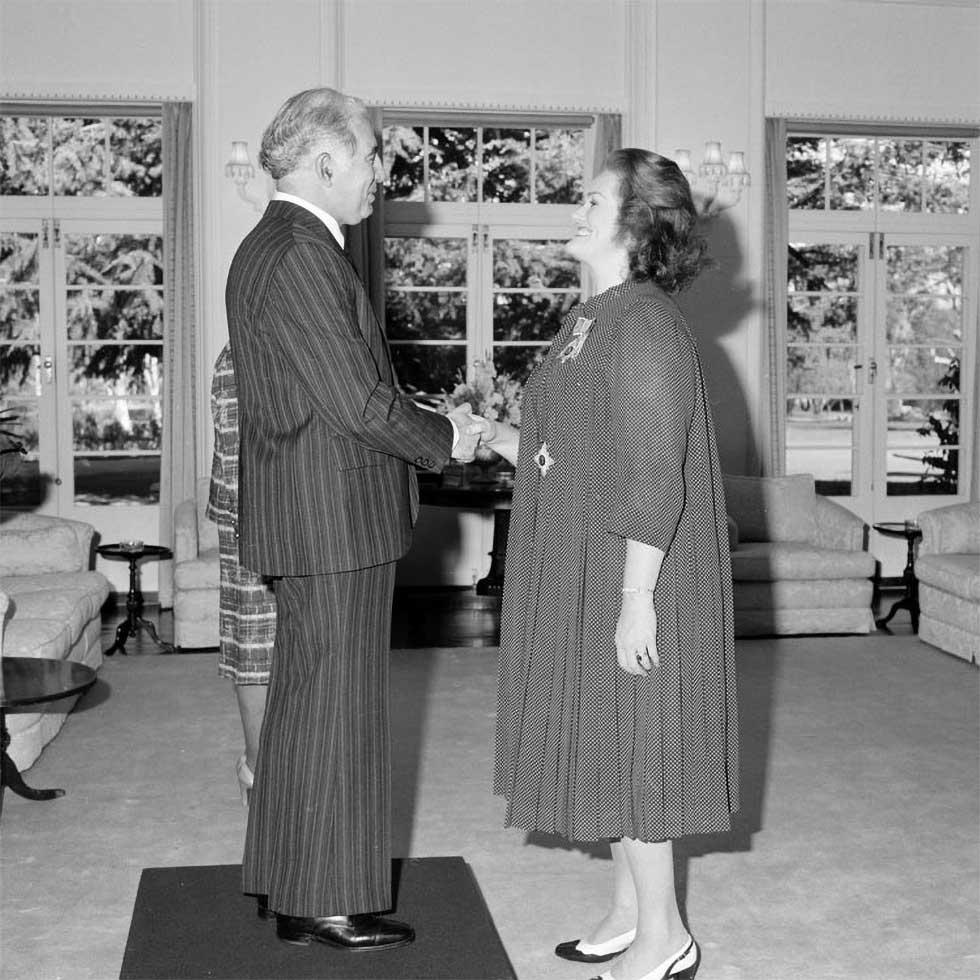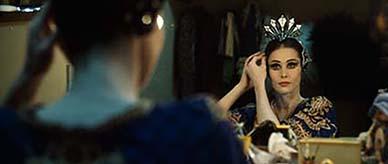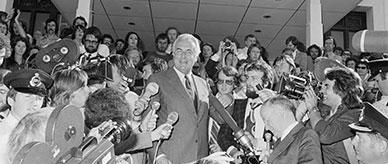


About this record
This is a black-and-white photograph showing Sir Zelman Cowen, Governor-General of Australia from 1977 to 1982, investing renowned opera singer Joan Sutherland as Dame Commander of the Order of the British Empire at Government House, Canberra. Sutherland is wearing the ribbon and eight-pointed star insignia of Dame Commander at her left breast and, lower down, what is possibly the insignia of Commander of the Order of the British Empire previously conferred in 1961.
Educational value
- Dame Joan Sutherland (1926–2010) was a world-famous Australian opera diva and when this photograph was taken she was at the pinnacle of her fame. In an international career spanning 40 years (1951–90), she performed more than 50 roles at the world's leading opera houses in Britain, Europe, the United States and Australia. She recorded more than 30 operas, recitals, compilations and anthologies, and these are frequently re-released.
- Sutherland was widely regarded by opera critics and fellow performers as the 20th century's best operatic soprano, with an extraordinary coloratura trill, an extensive range, and a pure, rich, even tone. After a 1960 performance of Handel's Alcina at La Fenice Opera House in Venice, the audience dubbed Sutherland 'La Stupenda' (the Stupendous One), and this accolade was ascribed to her for the remainder of her career.
- Sutherland received many honours and awards, including Commander of the Order of the British Empire in 1961 and elevation to Dame Commander in 1979 (seen here), Australian of the Year (1961), Companion of the Order of Australia (1975), Order of Merit (1991), the Kennedy Center Honor (2004), and the Australia Post Australian Legends Award (2004). Perhaps the most prized was the Order of Merit, which is limited to the Queen and 24 members.
- Sutherland's birthplace of Sydney was important in her career. She learnt the basics of singing from her mother and began to study opera seriously there at 18 years of age. In 1951, she sang the title role in the world premiere of Eugene Goossens' Judith in Sydney and won the Sun Aria competition, which awarded her a scholarship to study singing in London. She gave 265 performances in 23 roles at the Sydney Opera House, including her farewell in 1990.
- Sutherland's musical partner and husband, conductor Richard Bonynge (1930– ) had a major influence on her singing. He encouraged her to change her focus from heavy dramatic soprano roles to the bel canto (beautiful singing) style, which better suited her unique coloratura voice and high vocal range. Sutherland and Bonynge married in 1954.
- Sutherland first made an impression on the world stage when she sang the title role in Donizetti's Lucia di Lammermoor at the Royal Opera House, London, to great acclaim in 1959. She made her La Scala and Metropolitan debuts with Lucia in 1961 and her Covent Garden debut with Mozart's The Magic Flute in 1952. Her repertoire of leading roles continued to grow during the 1960s and 1970s.
Acknowledgments
Learning resource text © Education Services Australia Limited and the National Archives of Australia 2010.
Related themes
Need help with your research?
Learn how to interpret primary sources, use our collection and more.


